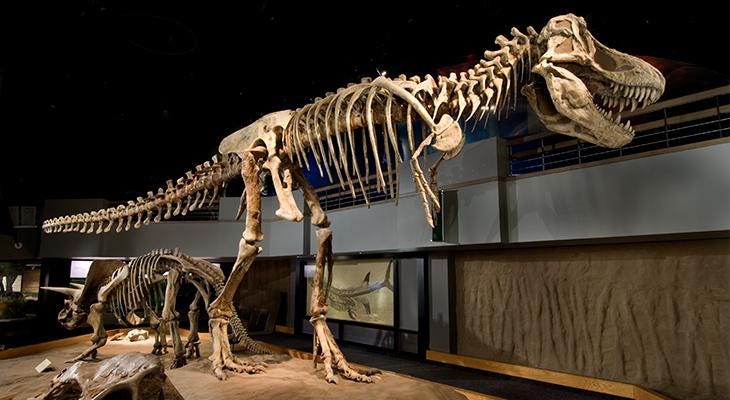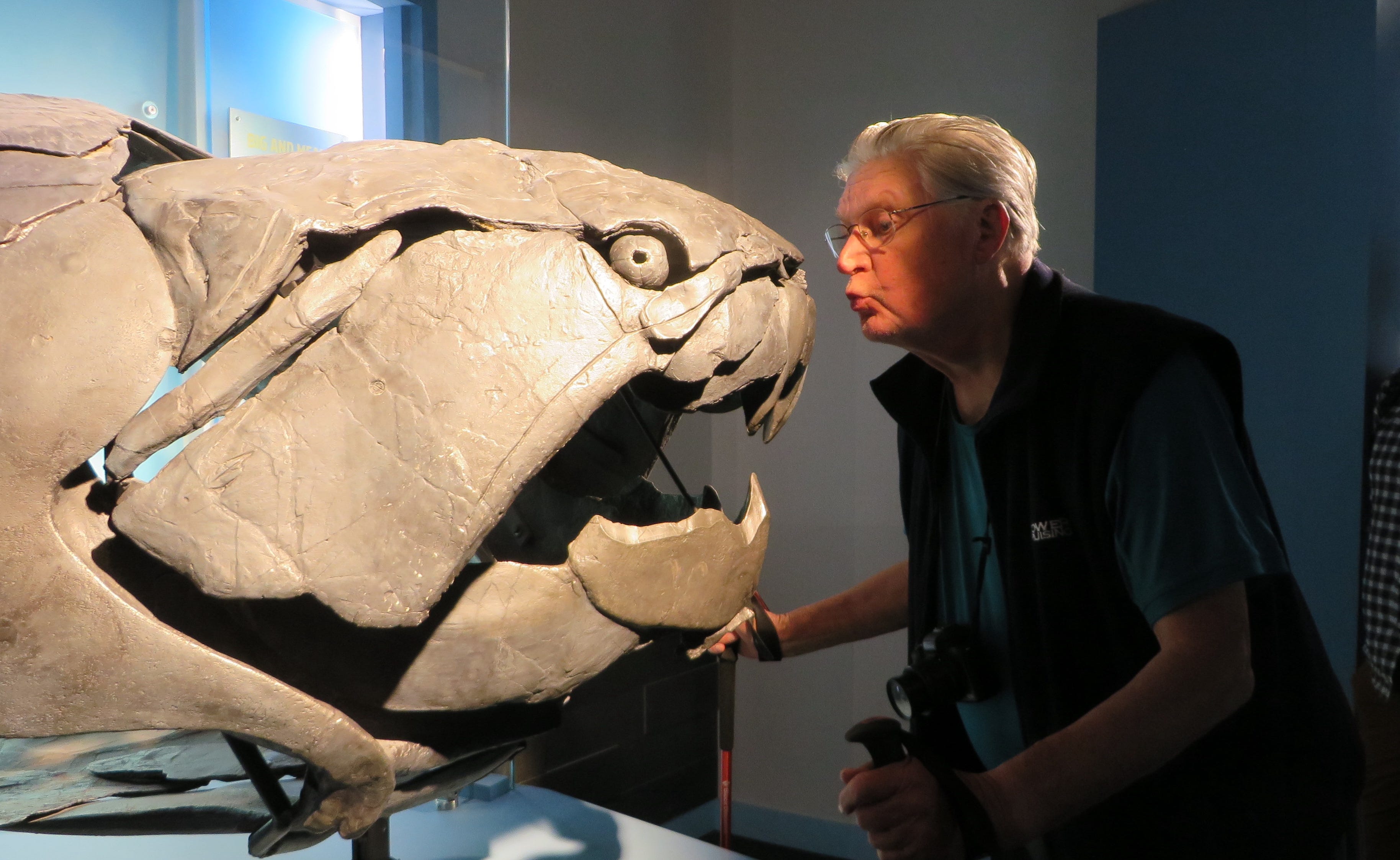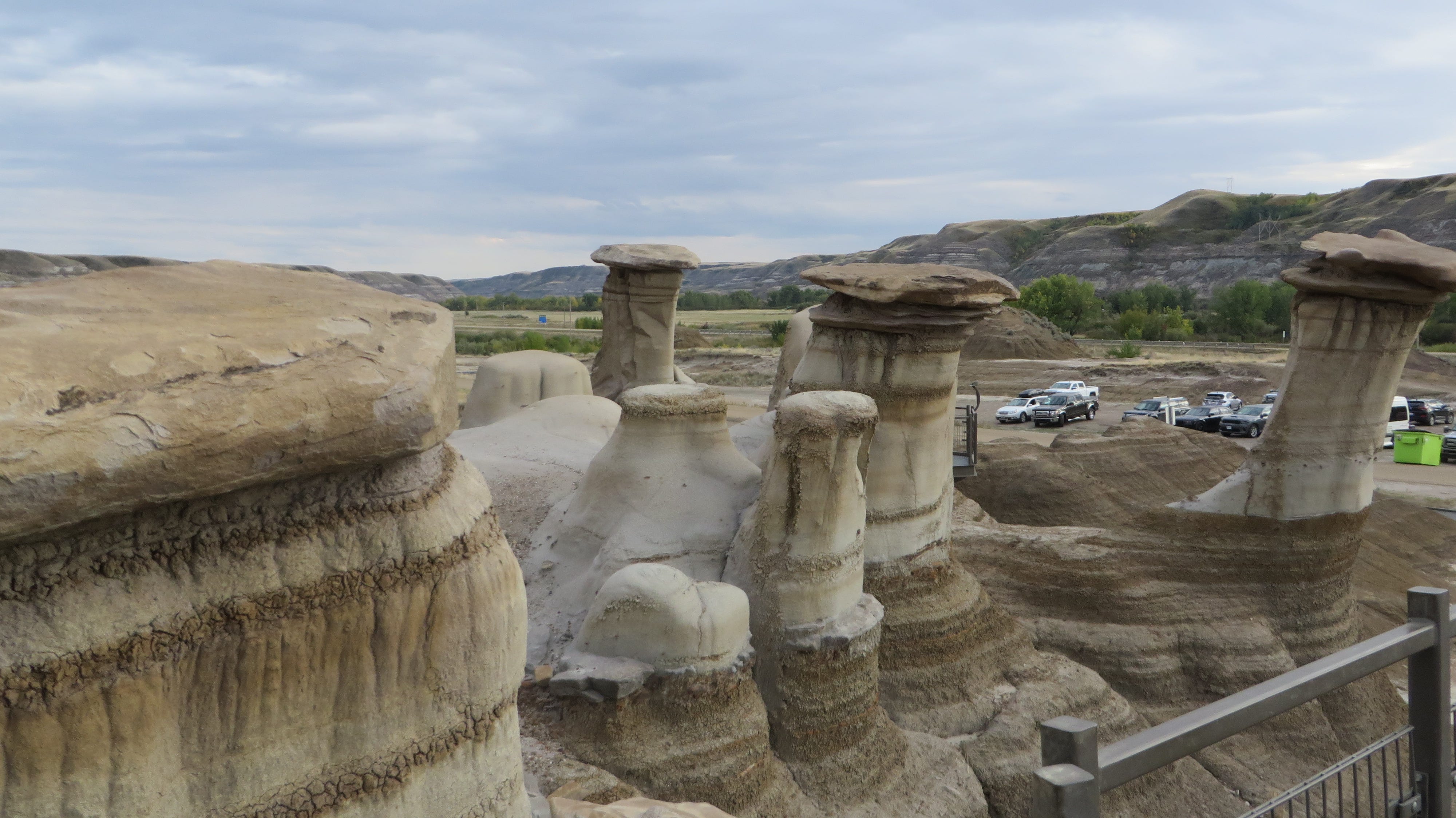Alberta: Hotbed of dinosaur paleontology
It was the biggest surprise of our cross-Canada camping trip
Everyone knows Alberta has more oil, natural gas and beef cattle than any other place in Canada, but until our trip West, we didn’t know that the province boasts the greatest collection of dinosaur fossils on the planet. On. The. Planet.
In Drumheller, 135 km northeast of Calgary, famed Royal Tyrrell Museum of Paleontology houses one of the world’s largest displays of full dinosaur skeletons, including five that are Guinness World Record holders. The record-breaking fossils include the largest marine reptile, a dinosaur with the longest neck ever recorded (based on the number of vertebrae) and the most complete tyrannosaurid skeleton.
Here‘s a two-minute video, thanks to Travel Alberta, that introduces the museum:
Dinosaurs lived in Canada from the late Triassic period to the end of the Cretaceous period 225 to 65 million years ago. Alberta was a dinosaur paradise. A warm-temperate climate meant lush vegetation that was perfect for herbivores, and herds of herbivores meant ample prey for the carnivores. Many bones from these animals were buried, and then fossilized. When the Ice Ages ended, the layers of rock that covered these fossils were washed away revealing one of the best deposits of late Cretaceous dinosaur fossils found anywhere in the world.
A massive asteroid hit the Earth near present-day Mexico 66 million years ago and wiped out dinosaurs, but they live on, as it were, in the Tyrrell.

We spent an afternoon at the museum, and that was a bare minimum. Ideally, one would stay in the Drumheller area for a week to allow for several days at the museum. There is so much to see and take in.
The Royal Tyrrell is Canada's only museum dedicated exclusively to the study of ancient life. In addition to featuring one of the world's largest displays of dinosaurs, the museum offer a wide variety of creative, fun, and educational programs that bring the prehistoric past to life.
The most popular exhibit is Dinosaur Hall which has more than 40 mounted dinosaur skeletons, including specimens of tyrannosaurus rex, albertosaurus, stegosaurus and triceratops. Those are the rock stars of the museum.
Drumheller is home to the world’s largest dinosaur, a giant replica that is 4.5 times bigger than the real T-Rex. Her name is Tyra and she guards the entrance to the visitor centre. Tyra is 86 ft (25 meters) tall, 151 feet (46 meters) long and features 106 stairs to climb to the top where 12 people can fit in the mouth at a time.
The unique Drumheller Hoodoos are another area attraction not to be missed.
Hoodoos take millions of years to form and stand 5 to 7 metres tall. Each hoodoo is a sandstone pillar resting on a thick base of shale that is capped by a large stone. Hoodoos are fragile and can erode completely if their capstone is dislodged (in other words, no climbing allowed). The protected hoodoos site just east of town is a guaranteed spot to see hoodoos but smaller versions of these sandstone giants can be found all over the Badlands.
What are the Badlands, you ask?
Seventy-five million years ago, when dinosaurs walked the earth, southern Alberta was a subtropical paradise of towering redwoods and giant ferns. Today, fertile plains suddenly drop away into a world of multi-hued canyons and wind-sculpted hoodoos. Spanning east from Drumheller to the Saskatchewan border and south to the United States, this region is known as the Canadian Badlands. It is home to the largest deposits of dinosaur bones in the world.
We spent a week camped out in the heart of the Badlands, at Dinosaur Provincial Park, but that’s a story for another day.
TRIP DATA
Day 30: 6,136 km from home
Next stop: Back to camp at Dinosaur Provincial Park
Resource: Dinosaur adventures
Resource: Canadian Badlands





